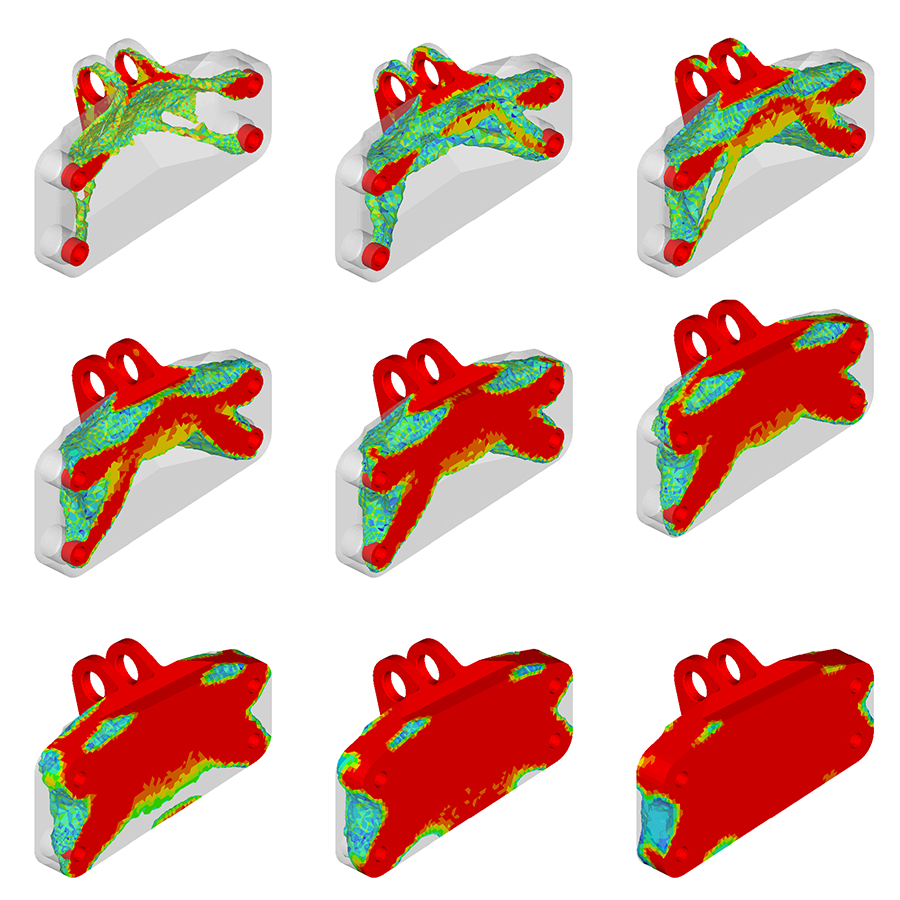Motivation
The intergovernmental panel on climate change (IPCC) estimates that aviation is responsible for 3.5% of anthropogenic climate change. The transportation industry as a whole accounts for 28% of of US green house gas emissions.
Balancing strength and weight is a fundamental challenge to the transportation industry as a whole. As demand for air travel, and CO2 emissions from aviation continue to grow, aircraft designers are going to great lengths to optimize structures and employ higher percentages of composite materials to reduce weight and subsequent fuel use.
The goal of this project is to explore the potential of recent advances in design and manufacturing technologies to increase the strength-to-weight ratio of vehicle structures.
Method
With traditional manufacturing methods, complexity tends to increase the cost of production. However, with the emergence of additive manufacturing, (often referred to as 3D printing) many of these costs are being removed.
By building components layer by layer, extremely complex designs can be produced for the same costs as very simple ones. Complexity is effectively free.
Numerical topology optimization provides a systematic method for optimizing the material layout within a design space for a given set of loads and boundary conditions.
While topology optimization has been an established branch of mathematics since the 1980’s, its application has been limited as optimal designs are often geometrically complex making them difficult, expensive, or even impossible to manufacture.
Process
Case Study: Jet Engine Loading Bracket
In an effort to crowd source innovation, GE aviation released the GE jet engine bracket challenge in June 2013. This contest challenged engineers to develop an improved, lightweight jet engine loading bracket that takes advantage of the design freedom of additive manufacturing. This challenge was selected for this project because it provides a well defined problem with a broad enough scope.
While these brackets may only be used periodically by manufacturing and maintenance crews, they must remain on the engine at all times, including during flight. It is thus essential that they be as lightweight as possible. While a simple loading bracket may initially appear to be a trivial problem, it is expected that insight gained will be transferrable to components throughout the aircraft and ultimately result in significant weight reduction.
Load Conditions
Topology Optimization
Minimize Weighted Compliance
Topology optimization was performed using Altair Optistruct. The algorithm was instructed to minimize weighted compliance while removing a specified fraction of the parts original volume. Volume fractions were evaluated from 100% to 10% of the part’s original volume while taking each load case into consideration.
Compliance is the inverse of stiffness, and is measured in units of metres per newton. The response above is defined for the whole structure as the weighted sum of the compliance of each individual load case.
By using the maximum stress results to plot the safety factor versus the volume fraction, we see that case 1 is the critical case, and that geometries below 30% of the original volume are likely to fail based on this loading condition.
In the aviation industry a safety factor of 1.5 is a general design guideline. As such, this standard will be used as the failure criteria for this case study.
Results
Final Design
The structural insights gained from the topology optimization were used to strategically remove material and reduce the weight of the original part. The final design features a trapezoidal central cavity with extruded cut holes to mimic the side cavities of the optimized geometry. It also features triangular cutouts on the clevis arm, and an optimized outer profile.
The proposed design reduces the mass by 48% while meeting the required stress constraints and achieving a safety factor of 1.5 which as mentioned is within the standard range for many aerospace components.
3D Printing
A model of the final design was printed in Stainless Steel using an ExOne binder jetting printer. In this process, the print head deposits a binder on successive layers of metal powder to build the part. The binder infused or "green" part is then placed in an oven where it is sintered at 1100°C.
The Paper
For more details, read the paper that uses this work as a case study:


















